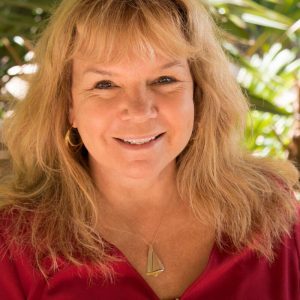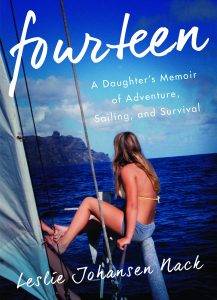The Truth About My Memoir
 I’ve written articles and blogs and given many talks—both before and after my book was published—about why I wrote my memoir. It’s not that the reasons I talked and wrote about aren’t true; it’s just that they weren’t fiercely true.
I’ve written articles and blogs and given many talks—both before and after my book was published—about why I wrote my memoir. It’s not that the reasons I talked and wrote about aren’t true; it’s just that they weren’t fiercely true.
Accessing my truth hasn’t always come easy. Let’s just say the truth played hide and seek with me while I drank and used drugs and buried it deep inside. It was a gigantic sore in me that I tried to ignore and cover up with fancy clothes and parties. But it festered. It oozed and itched and nearly destroyed me.
The truth about my life was like that onion everyone talks about, it unraveled in layers. It took years of sorting through the pain and heartache I’d stuffed down, for me to truly find the bottom. But, oddly, at the moment I reached critical mass with my pain and suffering (at age twenty-five) I wasn’t sure I wanted to give it up, either. I’d protected that toxic load inside of me for years. I’d even nurtured it, convincing myself that if I looked too closely, the pain would destroy me. But that wasn’t true. Not until I really saw the whole truth as an unhealed wound and was able to clean it out, did it finally heal into a scar. It doesn’t cause me pain anymore.
Here’s my truth: I was abused as a child. No big deal, right? It happens all the time. It’s heartbreaking how common it is.
But it’s an enormous understatement to say that accessing the painful truth was easy. It wasn’t. Deconstructing the stories we tell ourselves—the ones that allow us to survive such things is essential. And then what? How can we separate truth from fiction in our lives? What is the fierce truth?
Is it true that my mother was a manic-depressive alcoholic making her incapable of protecting me? Was my mother jealous of my relationship with my father? Is it the truth that my father was twisted and a voyeur?
Yes to all those questions.
My family was fractured, dysfunctional, and abusive—you know, just your typical 1960s American family. Our parents were emigrants, pursuing their private dreams, and my sisters and I grew up moving around a lot. I was the “middle child,” or at least that’s what they called me when I was young. But I was the lucky child—I was my father’s favorite.
Being the favorite doesn’t always mean extra privileges, favors, and staying up late. Being the favorite means that when your father prefers you to your mother, it creates Grand Canyon-sized divides in the family which are hard to recognize at nine, twelve, or fourteen years old. Negotiating those truths while coming of age meant incorporating them into a growing self, which complicated an already over-involved situation.
Put all that onto a 45-foot sailboat and place that boat in Southern California preparing for an around-the-world cruise with a lecherous father, two sisters, and no mother, and you can begin to imagine how many fears festered inside of me.
 Our first stop would be the South Pacific, a place that held visions of love and harmony and erotic intrigue. At fourteen years old, I was First Mate aboard our family sailboat when we headed out to that remote location, my father’s heart filled with dreams of naked native women eating pineapple on pristine beaches.
Our first stop would be the South Pacific, a place that held visions of love and harmony and erotic intrigue. At fourteen years old, I was First Mate aboard our family sailboat when we headed out to that remote location, my father’s heart filled with dreams of naked native women eating pineapple on pristine beaches.
It was a confusing, exciting, scary, adventurous, troubling, abusive time.
But I survived, and now I thrive. I eventually forgave my father and mother. I had to. It’s a small price to pay. Neither was aware enough in their lives back then to really see me as a person. When I finally had enough courage to scream my truth at my father, he heard me. In some small way, I woke him up just a little.
Here’s my fierce truth: I wrote my memoir for myself—to explore all of those things and to present to the world my story of coming of age through the eyes of that fourteen-year-old girl. I wrote my memoir for all the young girls who live with abuse. I wrote my memoir to, hopefully, open the eyes of men. (Could or would a man read my story and be able to understand what it’s like for a young girl living with the damaging fear of sexual abuse? Could he have compassion?) I wrote my memoir so the reader could live inside my skin without any indication of what would happen next, just as I had no idea what would happen next in my teenage world.
Through the process of writing, I learned a lot about the young woman I was—trying, for so many years, to figure it all out. And along the way, I have gained compassion for that little girl who endured abuse, survived so much, and blossomed, in spite of it all.
And finally, I wrote my memoir so I could release it to you, so you could add it to the history folder of the world’s stories. I have worked on it, studied it, cried about it, laughed about it, and scratched my head about it. So now, at fifty-six years old, I release it. I’m done with it.
—
Leslie Johansen Nack graduated UCLA with a BA in English literature. She is a member of the National Association of Memoir Writers and San Diego Writers Ink. She lives in San Diego and has two children with her husband of twenty-six years. She is the author of Fourteen: A Daughter’s Memoir of Adventure, Sailing, and Survival, (She Writes Press, Oct 2015) which won four 2016 indie book awards, including Winner of the NIEA for YA Non-Fiction; Winner of Bronze at Readers’ Favorites in Non-Fiction Travel; Finalist in the Next Generation Indie Book Awards for Memoir; and Winner of the Memoir category of the Beverly Hills Book Awards.
For more information go to www.lesliejohansennack.com
Fourteen, A Daughter’s Memoir of Adventure, Sailing and Survival
Winner of four independent book awards
Category: Contemporary Women Writers, On Writing




Good for you, Leslie! Great cover. Hope it gets out there and helps a lot of young girls living with the same issue.
Hi Sandra, Thanks so much for your comment. I have the same hope as you regarding my memoir.